ISO 56000 is a family of standards that guide organizations through how they should implement and operate their innovation management system. It was established by technical committees with innovation experts from 50 countries who compiled best practices that organizations with the most successful innovation systems use.
In this guide, we detail the standards inside the ISO 56000 family and the core best practices that ISO recommends for implementing an innovation management system. We’ll also discuss how our innovation management software, InnovationCast, supports these best practices.
What Does ISO 56000 Consist Of?
The ISO 56000 series of standards consists of seven key guidelines:
ISO 56000:2020 Fundamentals and Vocabulary: This standard lays the groundwork for a common language in innovation management by defining key principles and concepts. It helps prevent misunderstandings that may arise from varied interpretations of innovation terms.
ISO 56001: Innovation Management System — Requirements: Scheduled for release in September 2024, this will be the only certifiable standard in the series. It sets out the mandatory requirements for establishing, implementing, maintaining, and continuously improving an innovation management system based on the practices outlined in ISO 56002.
ISO 56002:2019 Innovation Management System — Guidance: This standard provides guidance on competencies, systems, and processes organizations need to gather insights from employees and other stakeholders for practical solutions.
ISO 56003:2019 Tools and Methods for Innovative Partnerships: Offers guidance on how organizations can identify innovation partnerships and manage those interactions.
ISO 56004:2019 Innovation Management Assessment: Outlines how organizations can assess their current innovation system, identify inefficiencies, and make necessary improvements.
ISO 56005:2020 Tools and Methods for Intellectual Property Management: Provides organizations with guidance on managing and protecting intellectual property.
ISO 56006: Tools and methods for Strategic Intelligence Management: Shows organizations how to use strategic intelligence — such as analyzing market trends and external technologies — to fuel innovation.
ISO 56007: Tools and Methods for Idea Management: Offers guidance on the tools and methods required to identify opportunities, develop concepts, and validate them.
ISO 56008: Tools and Methods for Innovation Operation Measurements: Addresses how organizations can measure the return on innovation and which metrics to use depending on the stage of the innovation process.
In this article, we focus primarily on ISO 56002 because it goes beyond foundational principles to detail how organizations should structure, implement, and continuously improve their innovation management systems, enabling them to innovate faster and more successfully.
Before diving into the specifics of ISO 56002, here are two important points to note:
ISO 56002 is simply a guidance standard. It provides practical guidance on what needs to be done but not on how to do it. Each organization has to design and implement their innovation management system based on their size, purpose, and types of innovation it seeks to address.
ISO 56001 certification is based on the principles outlined in ISO 56002 for establishing an innovation management system, rather than on the innovations that the system produces.
ISO 56000 Principles for Innovation Management Systems
These are the core principles that ISO outlines:
Realization of value
Future-focused leaders
Strategic direction
Culture
Exploiting insights
Managing uncertainty
Adaptability
Systems approach
Five steps organizations need to consider to adhere to these principles:
Create an innovation strategy
Inform employees about the innovation strategy and ask them to contribute with ideas
Validate ideas with high uncertainty
Develop ideas into innovations
Deploy the innovations
1. Create an Innovation Strategy
The ISO document begins by establishing that an innovation management system should be at the service of the organization’s goals and priorities. To do this, they recommend innovation managers create an innovation strategy that:
Describes what the organization is trying to achieve by implementing an innovation management system.
Is flexible and adaptable and can change based on feedback provided by employees and other participants.
The outcomes of these innovation activities should be a deep understanding of the organization’s objectives and priorities. Then, all employees can focus on identifying opportunities that address their innovation strategy.
Our Thoughts
This ISO best practice is consistent with our experience because we’ve found that many organizations don’t feel like their innovation management system is helping them reach their goals.
The reason behind this is a lack of an innovation strategy, or in other words, not making clear what problems the organization wants to solve or what goals it wants to achieve with innovation.
We — and the ISO — recommend that organizations clarify their priorities before designing and launching an innovation management system. This might involve addressing strategic issues, such as entering a new market or focusing on objectives like enhancing the product line by introducing new products.
Additionally, top management should be prepared to adjust their innovation strategy in response to industry news and trends that employees bring to their attention. The relationship between the company’s strategy and innovation is a two-way street. An innovation strategy should be set to help the organization meet its goals. However, what’s discovered through innovation activities should feed back to the organization’s strategy.
For example, say a company selling organic food products is focused on expanding its product line. However, multiple employees report that there’s increased demand for eco-friendly packaging. In this scenario, stakeholders can analyze this trend, and if they believe it’s a priority for the company, they can adapt their innovation strategy to involve using greener materials.
In order to adhere to this ISO best practice, innovation managers should establish a centralized hub where employees can share resources and the latest industry news with everyone else inside the company.
This way, everyone stays informed about trends, competitor activities, regulatory changes, and customer developments. Then, stakeholders and decision-makers can evaluate the significance of each resource and, if appropriate, adjust their innovation strategy.
2. Inform Employees About the Innovation Strategy and Ask Them to Contribute with Relevant Ideas
ISO standards specify that once innovation managers have developed an innovation strategy aligned with organizational priorities, they must communicate it to all employees before asking them to share ideas.
By educating employees on innovation initiatives, they understand the kinds of ideas innovation managers are looking for. Then, they can brainstorm ways to tackle these priorities and share their best ideas. This allows organizations to collect a list of high-quality ideas relevant to their innovation strategy.
Our Thoughts
ISO’s recommendation for idea collection astutely addresses a mistake we’ve seen many organizations make when setting up their innovation management system. They don't give employees any information on the background of what the organization is prioritizing, but instead, they create a web page or company email address and ask employees to submit any ideas they may have.
Additionally, once ideas are submitted, only a few innovation managers and stakeholders can view the ideas.
There are three problems with this approach:
Employees don’t know what ideas the innovation department is looking for or what its priorities are. So, they submit any ideas that come to mind, resulting in innovation managers mainly collecting ideas unrelated to their innovation strategy.
These calls for ideas don’t have deadlines, so there’s no urgency for employees to participate, which makes it difficult for innovation managers to collect ideas within a short timeframe.
Since nobody can view ideas once they’ve been submitted, employees cannot work together and use each other’s skill sets to identify limitations with ideas and make improvements.
To solve these problems, we suggest organizations run innovation challenges to focus employees on co-creating ideas relevant to the company’s innovation strategy.
Innovation challenges are calls for employees (and outside participants) to submit ideas related to specific priorities before a certain date. When creating a challenge, innovation managers can add resources such as market research data and customer interviews and ask employees to review them before submitting ideas, leading to better-researched ideas.
Because challenges are time-constrained, they encourage employees to get involved before they close. This urgency helps innovation managers collect more ideas than a web form or company email address.
In addition, an effective innovation management system should allow employees to provide feedback on each other’s ideas and collaborate to improve them. Remember, most ideas aren’t perfect from the get-go. By enabling employees from different departments to leverage their expertise in refining these ideas, decision makers end up with higher-quality ideas.
Read more: 7 Strategies to Get Innovative Ideas from Employees
3. Validate Ideas with High Uncertainty
The ISO document recommends that organizations validate ideas and determine if they can actually create value for the company before launching them. To do this, organizations must create validation teams and assign specific validation tasks to them.
Using the knowledge gained when completing these tasks, innovation managers can adjust, iterate upon, or terminate ideas. This leaves them with a list of ideas that have an accepted level of risk and high potential that they can develop into shippable solutions.
Our Thoughts
ISO's recommendation for establishing validation processes is significant because many organizations underestimate the importance of moving an idea through its entire lifecycle — collecting, assessing, validating, and ultimately implementing it.
Many organizations crowdsource ideas from employees, but without proper validation processes to advance them, these ideas often remain dormant. Instead, organizations must establish validation processes to test and further develop ideas.
However, a key point we'd like to emphasize, which is not extensively covered by ISO, is that different types of innovations carry varying levels of risk and therefore require distinct validation tasks.
For instance, small changes to existing products or processes may not require extensive validation because there’s often ample data supporting the idea, and if it doesn't meet expectations, the impact on resources is minimal. In these cases, the idea development team might simply build a business case and move the idea directly to implementation.
On the other hand, ideas that involve higher risks and greater resource requirements — such as launching a new product or expanding into a new market — demand more thorough validation due to the significant uncertainty and resources involved.
Since different ideas require different validation and implementation steps, innovation managers should establish idea-specific processes for validation. They can't use the same process to validate an operational idea as they would a new product idea.
Read more: Best Practices to Evaluate Innovation Ideas
4. Develop Innovations
Once innovation managers have reduced uncertainty and gained confidence in an idea, ISO recommends selecting the ideas with the most impact and an acceptable level of risk and developing them into a working solution.
When developing an idea, organizations should considering following factors:
Development Approach: Should the organization develop the solution internally, co-create with another organization, or outsource it to an external partner.
Risk Assessment: Are there any risks associated with launching the new solution? These may include legal requirements, regulatory compliance, or scalability limitations.
Intellectual Property: Did you conduct a State of the Art search to ensure that the new solution doesn’t infringe on existing IP rights?
Material Sourcing: Do you need to source materials at scale from a supplier?
Once the organization has considered these factors and launched the new solution, ISO recommends supporting its continued growth by investing in marketing and promotion. Additionally, it’s important to monitor the realized value and benefits of the implemented idea (more on this later).
Our Thoughts
At this stage, innovation projects are transformed into working solutions. Initially, they might seem straightforward to implement, following a standard project management approach with tasks, milestones, resources, risks, and deadlines.
However, it's important to remember that innovations inherently carry a degree of uncertainty. While validation tasks can reduce this uncertainty, they cannot eliminate it entirely.
A significant issue we often see during the development stage is a lack of appropriate metrics to track progress and maintain shared awareness between innovation and implementation teams. Innovations often involve multiple changes and ongoing adjustments to the initial design or expected value proposition.
Therefore, even if organizations follow standard development stages, it’s essential that both implementation and innovation teams agree on which KPIs will be tracked.
Read more: How to Develop an Innovation Process to Launch New Ideas
5. Deploy Innovations
The final phase of the innovation management process is deploying the solution and making it available to end users.
When deploying innovations, ISO suggests the following best practices:
Establish scalability plans (if you’ve only built a few prototypes for customer testing, this is the stage to source materials from suppliers at scale).
Provide the solution to all interested parties.
Gather feedback through customer interviews and surveys to continuously improve the solution.
Monitor the solution's adoption rate and other KPIs to assess the value it generates for the business.
Our Thoughts
While the first three points presented by ISO are fairly straightforward, we want to delve deeper into measuring the impact of innovation projects. This approach allows organizations to manage innovation more strategically, understand why certain ideas succeed while others don’t, and focus ideation on the most successful types of ideas.
We often see two common mistakes organizations make when measuring innovation:
Focusing on participation metrics: Organizations sometimes emphasize metrics like the number of ideas collected rather than the actual returns generated. While participation metrics are useful, especially for new innovation departments gauging engagement, top management is ultimately interested in the financial benefits. Reporting on the innovation program's financial returns is more compelling and ensures continued budget support.
Short-term impact measurement: Organizations often measure a project's impact only shortly after launch, such as within 90 days. While short-term tracking can help identify immediate issues, long-term success is arguably more important.
For example, a fast food chain may experience initial success with a new milkshake, but if long-term sales data show a significant drop, it could indicate that the product did not meet customer expectations.
Tracking long-term metrics would help the company make more informed decisions about continuing or cutting budget for the new product.
Read more: How to Measure Innovation: Essential KPIs & Best Practices
How InnovationCast Supports Best Practices Inside ISO’s Series of International Standards
Here’s how InnovationCast’s innovation capabilities help organizations adhere to ISO best practices:
Signals & Scouting Helps Management Stay Updated on Industry Trends
Signals & Scouting allows employees and outside users to share news about technologies, competitors, startups, regulators, and customers and centralize it within the InnovationCast dashboard.
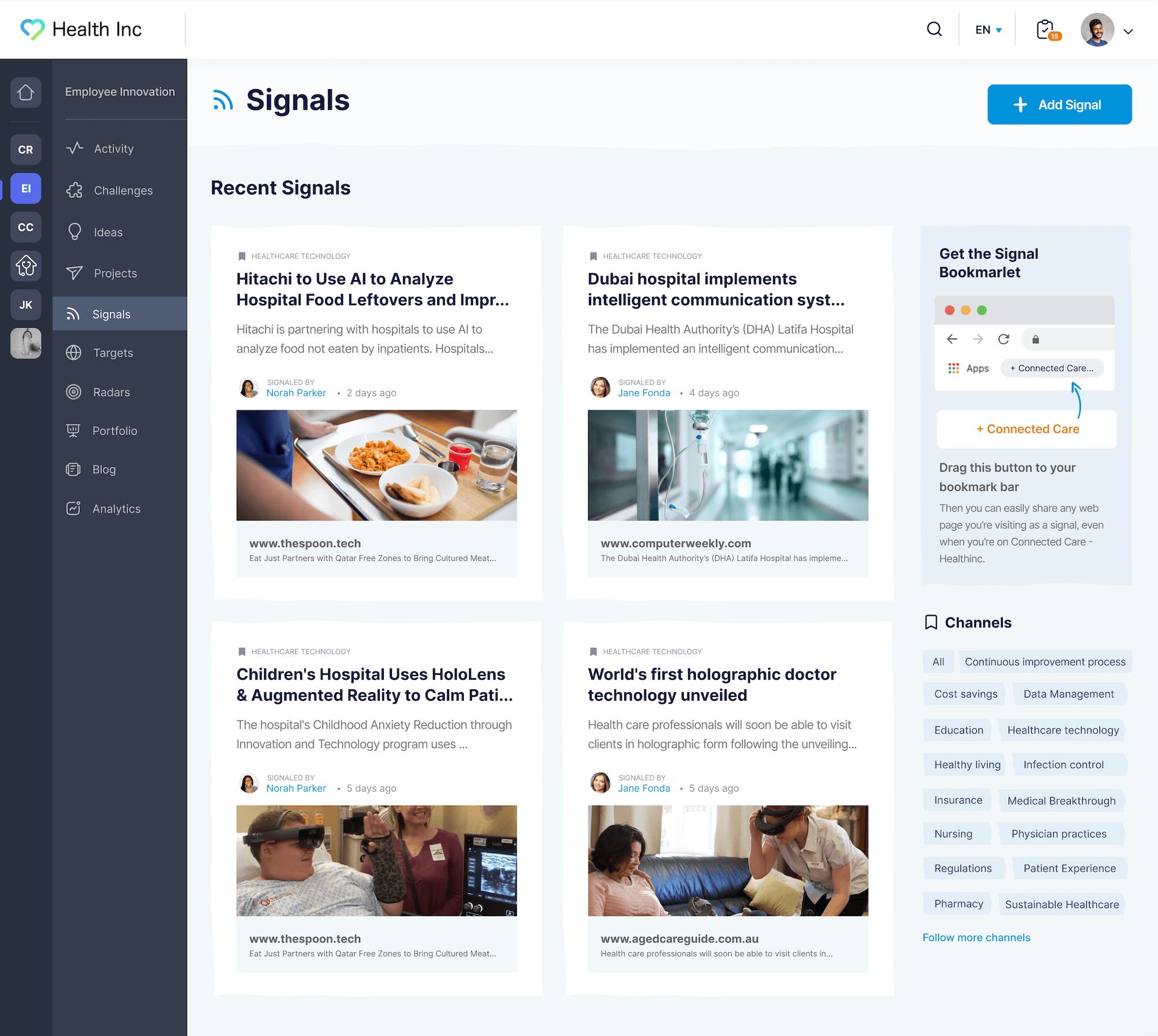
When users log into InnovationCast, they can view the resources others shared, respond with their thoughts, and discuss whether the company should take action.
Innovation Challenges Help Innovation Managers Collect Ideas Related to Their Innovation Strategy
InnovationCast supports the ISO’s best practice for ideation with Innovation Challenges and “Always On” idea collection.
Innovation Challenges are time-bound invitations for employees and outside participants to share ideas on certain priorities tied to their innovation strategy.
When posting a challenge, innovation managers can attach resources such as market research, customer interviews, and FAQ sections to help employees grasp the specifics of the priority at hand.
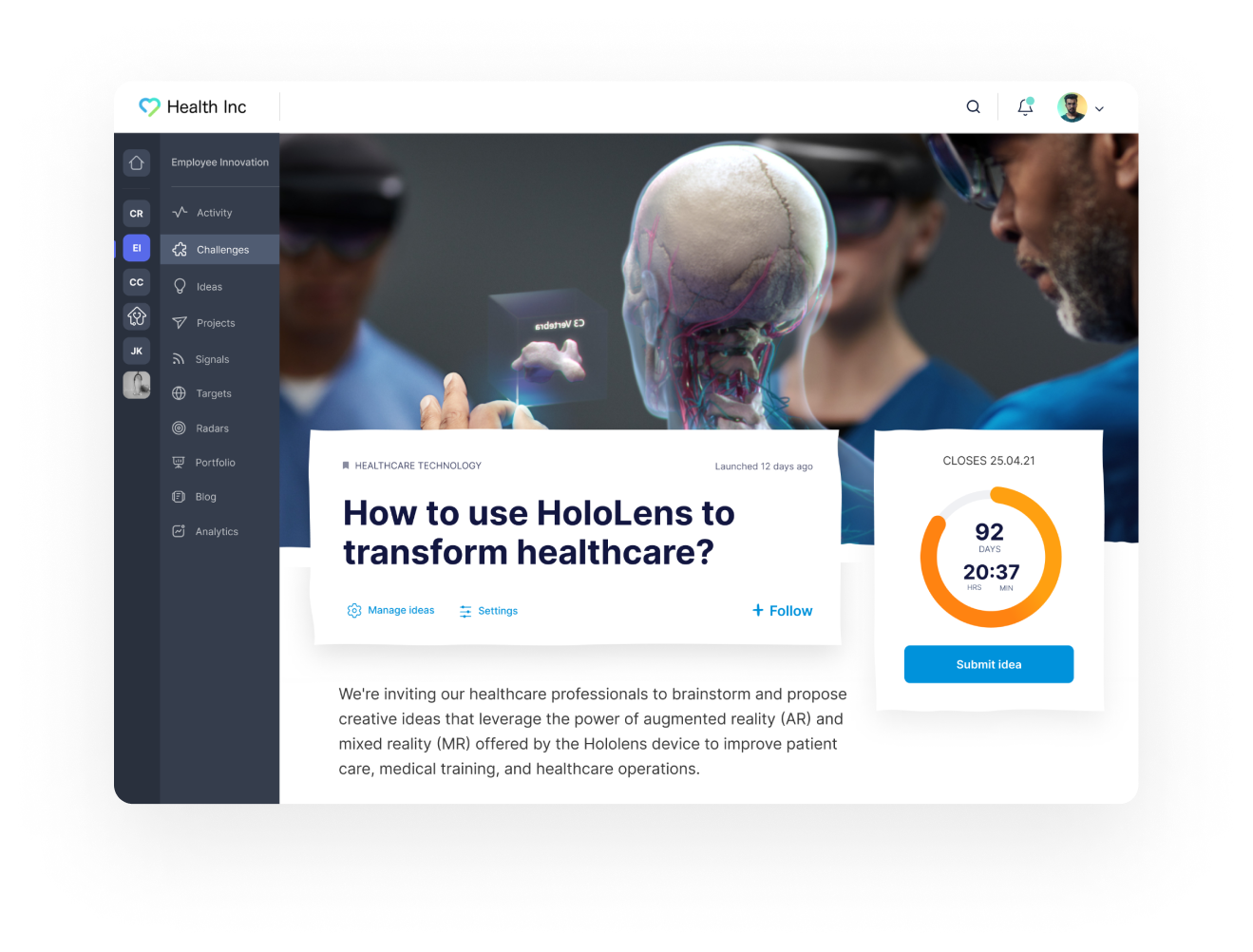
Innovation managers can set deadlines for each challenge to convey urgency and encourage prompt idea submission.
Additionally, with the “Always On” feature, innovation managers can maintain a 24/7 open call for idea submissions. By creating specific topics of interest with Idea Categories, they can guide employees to submit ideas aligned with the organization’s priorities.
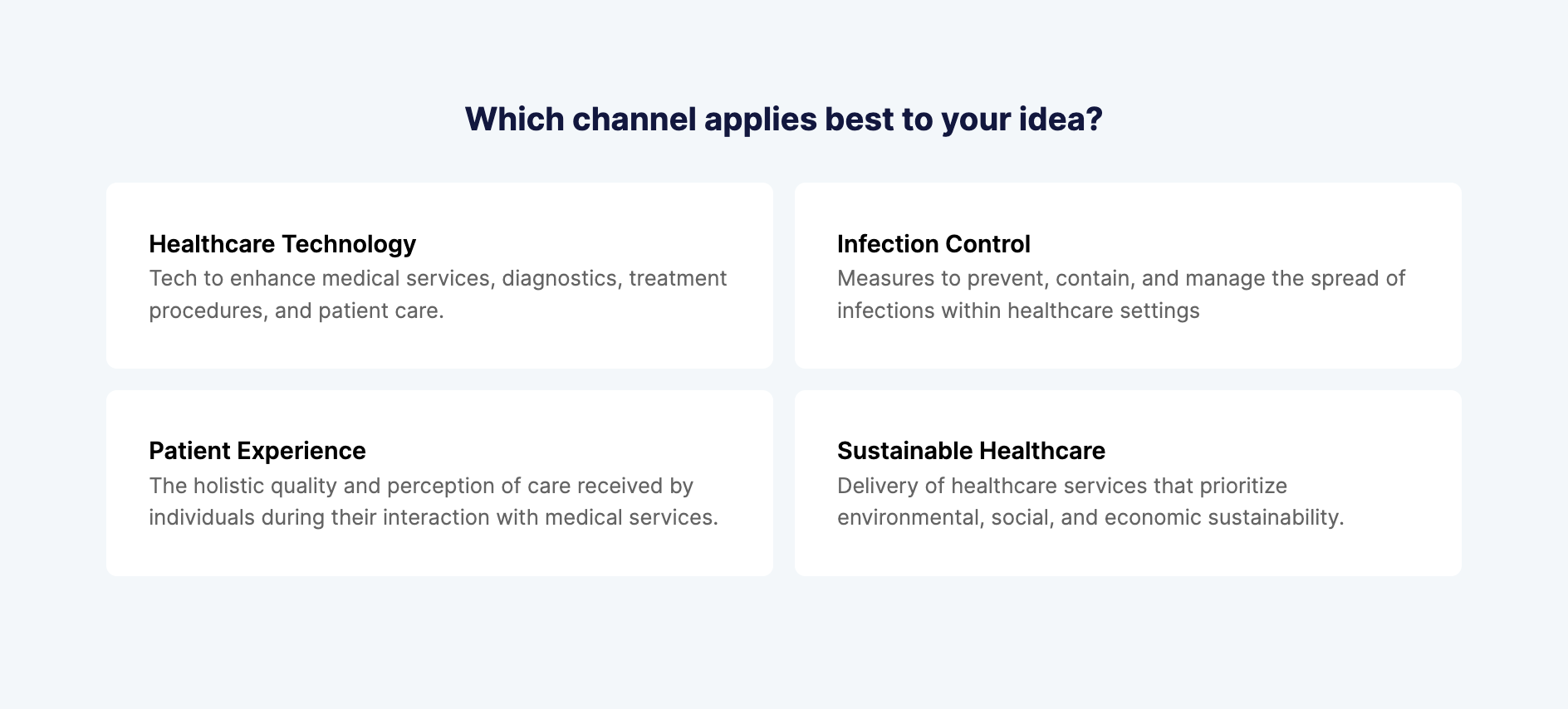
Then, when someone submits an idea, innovation managers can display it on the InnovationCast dashboard for others to see. Employees from all corners of the company can use their expertise to identify weaknesses in ideas and make suggestions, improving the quality of ideas collected by the innovation department.

Read more: 5 Best Open Innovation Software (2024 Reviews)
InnovationCast’s Configurable Idea Evaluation Workflows Help Innovation Managers Validate Ideas
To help organizations validate ideas and reduce uncertainty, we added configurable idea evaluation workflows to InnovationCast.
These idea evaluation workflows organize the work that teams inside the organization must complete to understand whether to launch an idea. We've designed these evaluation workflows using best practices from frameworks such as discovery-driven planning, lean startup, and design thinking.
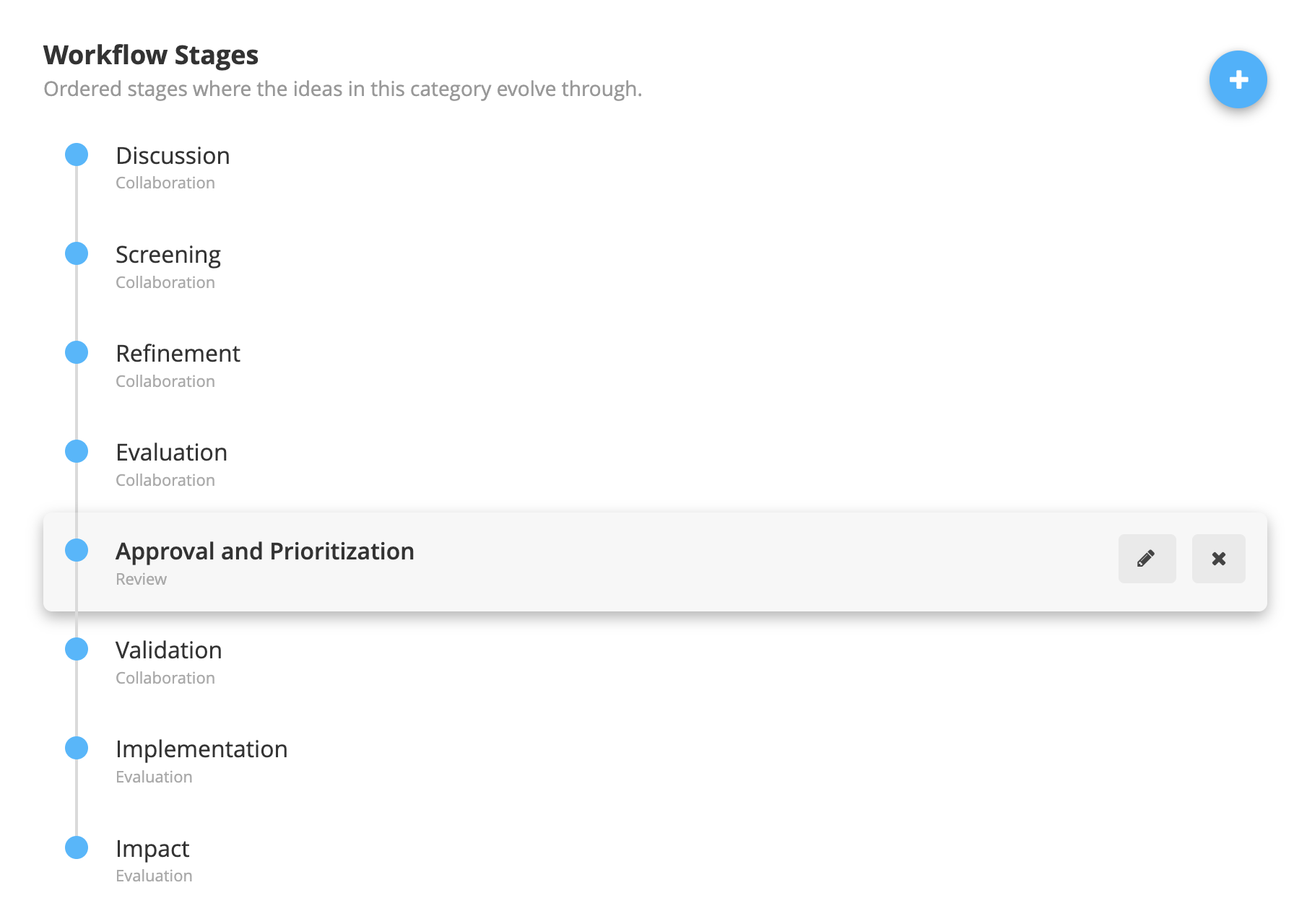
By completing the tasks or experiments inside these workflows, organizations can gauge whether ideas will live up to expectations (i.e., do they solve customers' problems and are customers willing to pay enough for the idea to be profitable?) As innovation managers complete these validation tasks, they reduce uncertainty and gain confidence in the idea.
However, as we mentioned above, ideas have different levels of risk and, therefore, call for different validation steps. This is why InnovationCast allows innovation managers to set up and configure as many workflows as needed to validate various ideas.
For riskier ideas, such as new product launches, we have out-of-the-box workflows that involve the product team building an MVP and the customer support team conducting customer interviews.
For simpler ideas, like improving existing products, we have continuous improvement workflows.

During onboarding, we help you set up workflows based on your organization's innovation strategy. However, you can configure new workflows any time by dragging and dropping steps. You don't need to write code or contact our customer support team.
InnovationCast’s Innovation Project Management tools Help Develop and Launch Innovations
To help organizations validate ideas and bring them to fruition, we developed an innovation project management feature within InnovationCast.
With this feature, users can create tasks needed to launch an idea and assign them to specific teams.
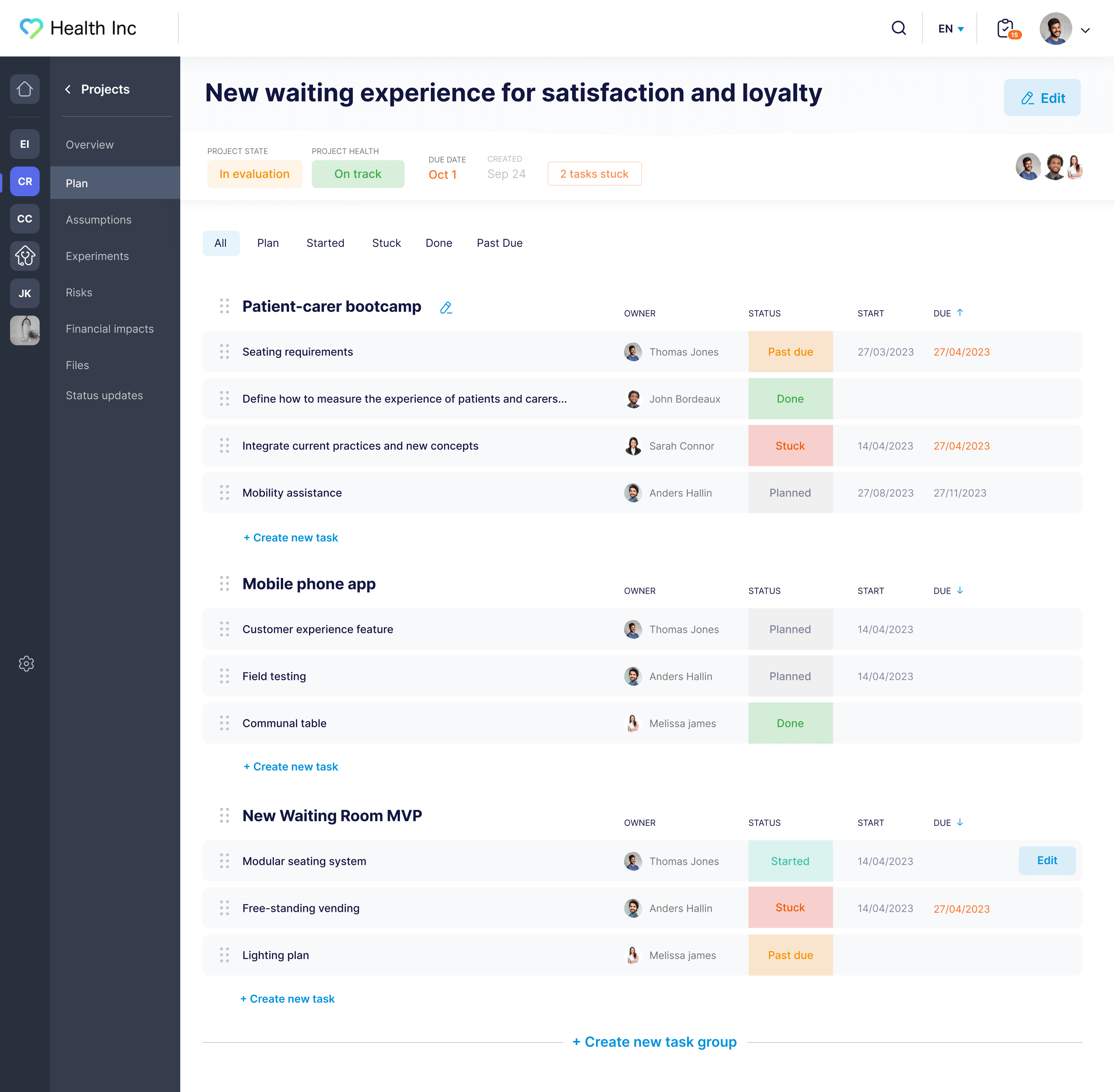
Users can add additional resources to each task card, including essential information like market research and regulatory requirements. They can also set deadlines for the project's readiness and monitor the team's progress to ensure they stay on track.
These deadlines, combined with our automation features that notify users when their input is needed, help keep implementations on schedule. If a task falls behind, department leaders can quickly view the issue in their dashboard, identify the cause of the delay, and either call for assistance or adjust the deadline as needed.
InnovationCast’s Portfolio Manager and Reporting Dashboard Track the Impact of Innovations
Once innovation managers have launched ideas, they can use our Portfolio Manager to keep track of all past and ongoing implementations, analyze each project's implementation steps, and dig deeper into why some projects succeed while others do not.
Our reporting dashboard then helps measure the impact of each project. We assist in setting up these dashboards during onboarding, customizing them to align with the maturity level of your innovation system and strategic goals.
Metrics you can track include:
Number of active projects
ROI of each project
Active projects by development stage
Projects by area of innovation strategy
Project completion rates
Resource allocation per project
Financial and non-financial KPIs related to created value and benefits
For those establishing an innovation system, InnovationCast also provides participation metrics such as the number of idea submissions, total active users, and topics with the most engagement.
Read more: 6 Best Innovation Portfolio Management Software in 2024
Support Innovation and Competitiveness with InnovationCast
Various types of organizations like DHL, Novo Nordisk, and ING have leveraged our innovation management software, InnovationCast, to implement an innovation system that adheres to ISO best practices. Our solution goes beyond just collecting ideas — it helps turn them into valuable products, services, and processes.
If you’d like to learn more about how InnovationCast can help you establish an innovation system within your organization, book a free demo.
Related reads:

